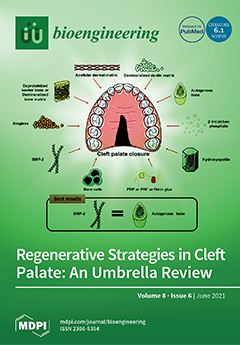Open AccessArticle
In-House, Fast FDM Prototyping of a Custom Cutting Guide for a Lower-Risk Pediatric Femoral Osteotomy
by
Leonardo Frizziero, Gian Maria Santi, Christian Leon-Cardenas, Giampiero Donnici, Alfredo Liverani, Paola Papaleo, Francesca Napolitano, Curzio Pagliari, Giovanni Luigi Di Gennaro, Stefano Stallone, Stefano Stilli, Giovanni Trisolino and Paola Zarantonello
Cited by 18 | Viewed by 4826
Abstract
Three-dimensional printed custom cutting guides (CCGs) are becoming more and more investigated in medical literature, as a patient-specific approach is often desired and very much needed in today’s surgical practice. Three-dimensional printing applications and computer-aided surgical simulations (CASS) allow for meticulous preoperatory planning
[...] Read more.
Three-dimensional printed custom cutting guides (CCGs) are becoming more and more investigated in medical literature, as a patient-specific approach is often desired and very much needed in today’s surgical practice. Three-dimensional printing applications and computer-aided surgical simulations (CASS) allow for meticulous preoperatory planning and substantial reductions of operating time and risk of human error. However, several limitations seem to slow the large-scale adoption of 3D printed CCGs. CAD designing and 3D printing skills are inevitably needed to develop workflow and address the study; therefore, hospitals are pushed to include third-party collaboration, from highly specialized medical centers to industrial engineering companies, thus increasing the time and cost of labor. The aim of this study was to move towards the feasibility of an in-house, low-cost CCG 3D printing methodology for pediatric orthopedic (PO) surgery. The prototype of a femoral cutting guide was developed for its application at the IOR—Rizzoli Orthopedic Institute of Bologna. The element was printed with an entry-level 3D printer with a high-temperature PLA fiber, whose thermomechanical properties can withstand common steam heat sterilization without bending or losing the original geometry. This methodology allowed for extensive preoperatory planning that would likewise reduce the overall surgery time, whilst reducing the risks related to the intervention.
Full article
►▼
Show Figures






